Bachstr. 2 (previously Hauptstr. 45)
The Stumbling Stones are located on the Hauptstraße (north side), east of the Bachstraße intersection.
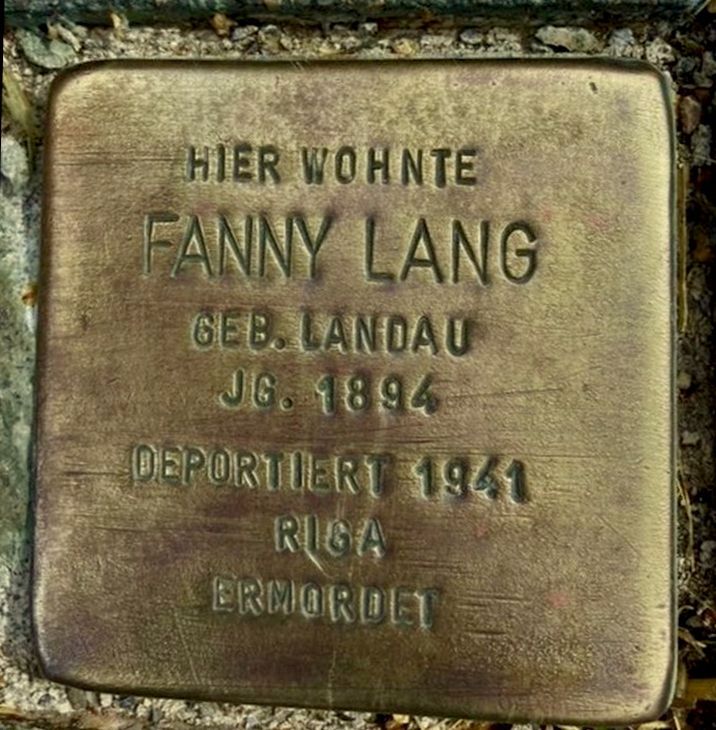
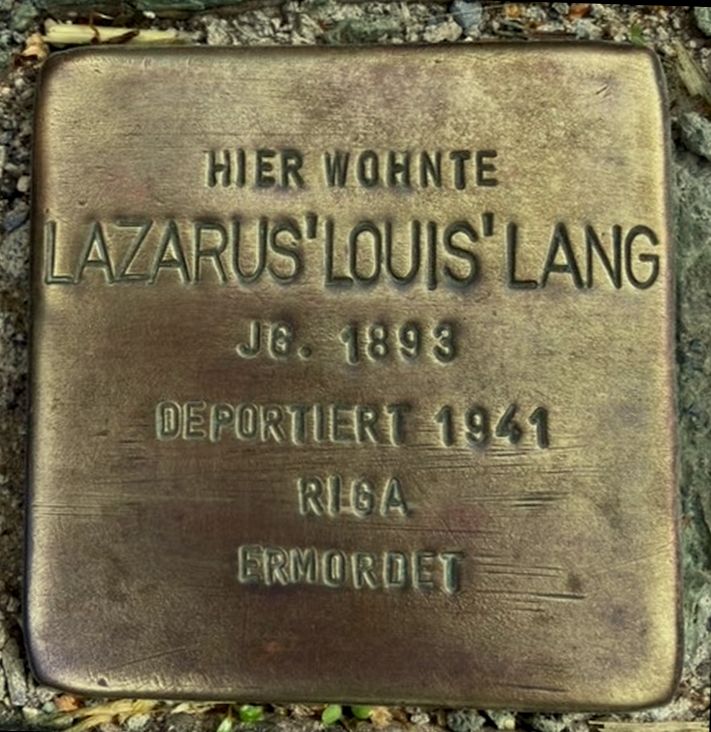
Lazarus Lang, who was known as Louis, was born on February 2, 1893, in Ernsbach, County Oehringen. He was the first child in the marriage of Samuel Lang, a Jewish merchant, and his third wife Regine, née Heilbronner. He and his brother Leopold Lang were soldiers for the German Empire during World War One.
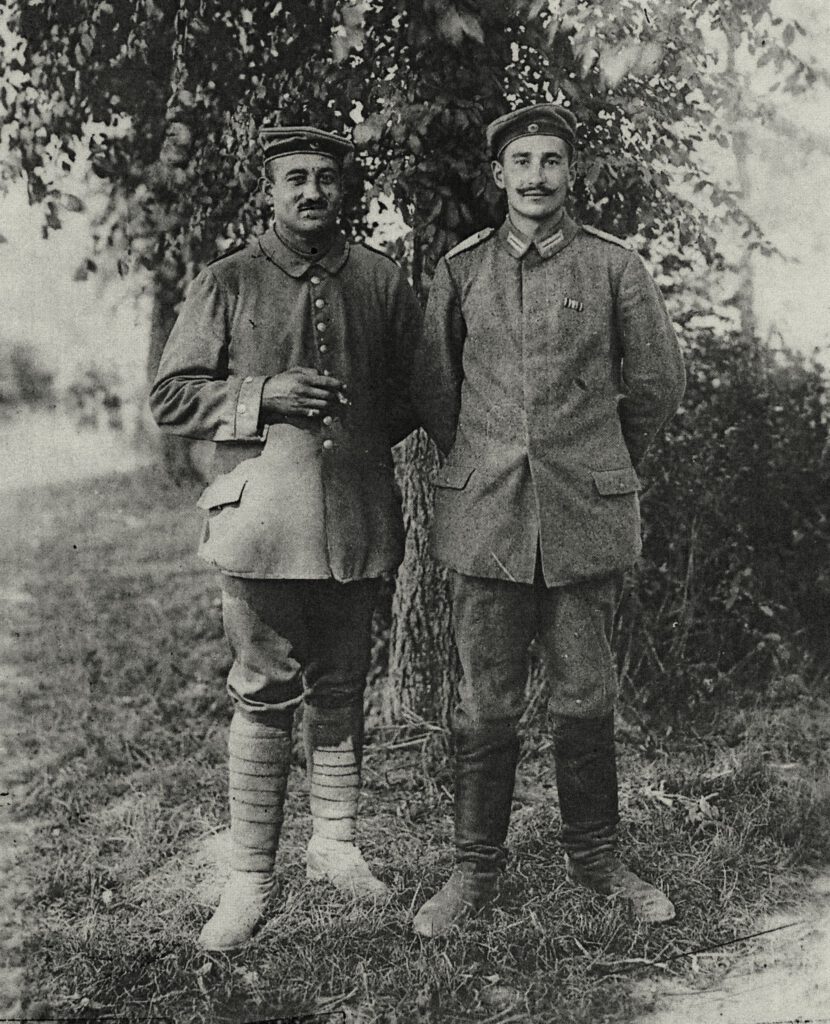
He fought in the war from August 1, 1914 to December 20, 1918, and received the Iron Cross Second Class, the Silver Military Merit Medal and the Austrian Medal of Merit Third Class for Frontline Combatants.
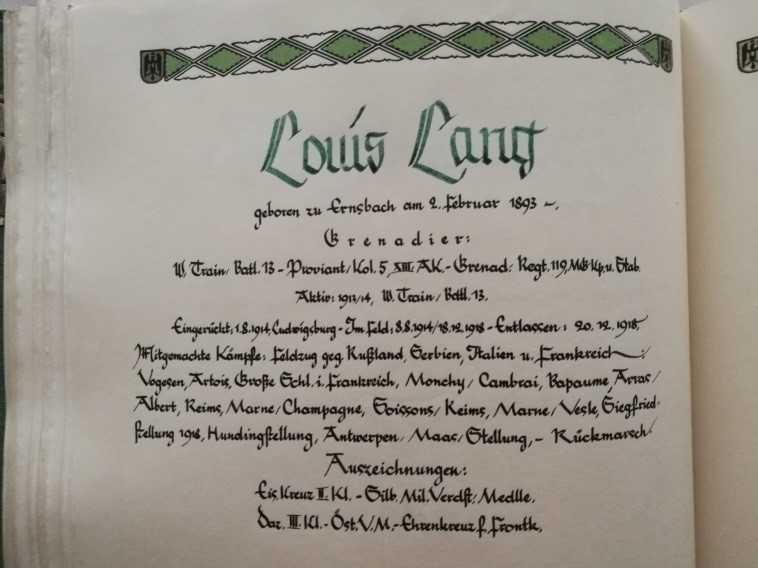
Cattle trade in Suessen
Louis’s half-brother Jacob Lang had built up a successful cattle trade business in Suessen and lived with his family in his own house at Hindenburgstraße 45. Jacob Lang died unexpectedly in 1918. In the January 1919 registry, Louis Lang was listed as living at Hindenburgstraße 45 at his sister-in-law’s house, Jacob Lang’s widow Fanny Lang. On July 6, 1920, Louis married Pauline Baer (born December 15, 1885) from Rodalben / Palatinate, who moved to Suessen in September 1920 to live there with her husband. Thanks to her dowry, Louis was able to purchase cattle and, together with his brother Leopold, take over the cattle trade business of their late half-brother Jacob Lang in Suessen.
Four children were born: Regine Ingeborg (Teddy) on July 31, 1921, Henriette (Henny) on October 3, 1922, Joseph Kurt on July 7, 1924, and Siegfried on July 10, 1925. In 1923 Louis Lang bought the house at Heidenheimer Strasse 31 in Suessen and moved there. In 1929 he sold his house at Heidenheimer Strasse 31 and purchased the house at Hindenburgstraße 45 for 25,000 RM from his sister-in-law Fanny Lang, the widow of his half-brother Jacob Lang, who then moved back to Rexingen with her three children. The property at Hindenburgstraße 45 is described in the purchase agreement as follows: ‘House with courtyard, barn downstairs at the house, wash house behind the house, vegetable garden in front of the house, tree garden in the Au, right to use a meadow in the Kappendobel.’ In the years that followed, Louis Lang had the stable for his cattle business enlarged and a car garage built.
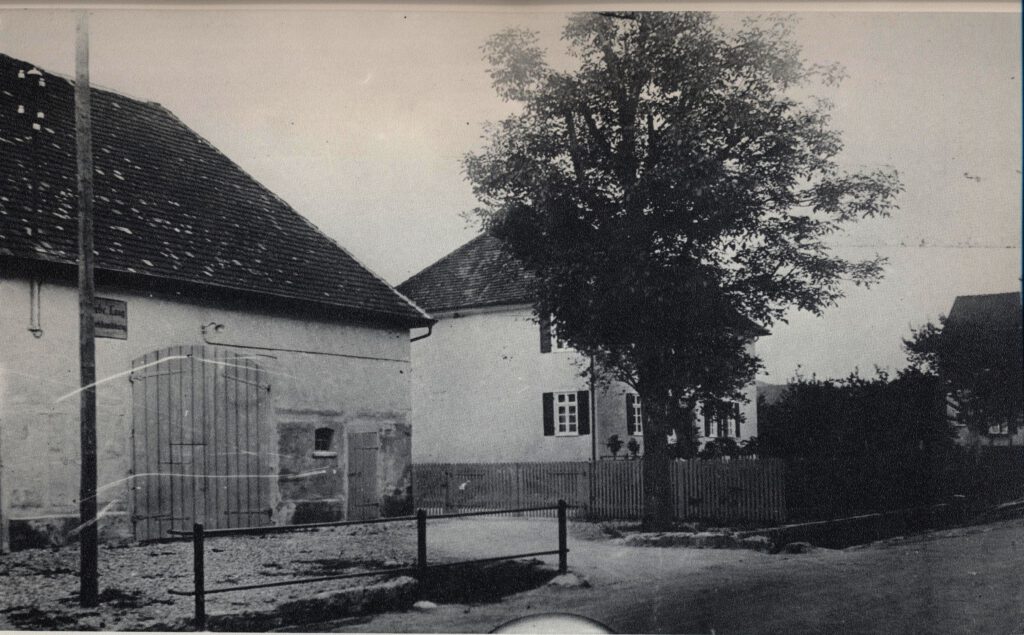
Residential house with barn, around 1930 (Photo: Süßen City Archive)
His wife Pauline Lang died on November 22, 1935, in a clinic in Tuebingen. There is a list of Pauline Lang’s estate from December 14, 1935. Her possessions included silver cutlery, three finger rings, a brooch, three hats, four pairs of shoes, a radio, a knitting basket, a sewing machine, a wash machine and an electric iron. She also owned a car together with her husband. Before the Guardianship Court in Geislingen, Louis Lang stated that the joint movable assets amounted to approx. 12,500 RM.
Nuremberg Laws and Pogrom Night
The promulgation of the Nuremberg Laws in 1935 and a large number of other Nazi laws and ordinances increasingly restricted the everyday lives of Jewish people in Germany, almost all areas of public and private life were affected. As of July 1938, Louis Lang was banned from working in his business and had to officially discontinue cattle trading on July 1, 1938. After that he worked as an unskilled laborer at the Friedrich Bader company, a wood goods factory and sawmill in Eislingen.
His son Kurt Lang was dismissed from school in October 1938. The Oberamt Göppingen decided that ‘the Jewish student Kurt Lang, who is currently attending fourth grade [8th grade equivalent – note by translator] at the Hohenstaufen high school in Goeppingen, intends to leave it. He would have to complete the rest of his compulsory schooling in public elementary school. Since admission to the German school in Suessen is out of the question and the Jewish school in Goeppingen does not have an 8th grade, he can be discharged early from school at the beginning of the winter semester.’ In 1937, Siegfried, the youngest son, attended the Goeppingen Jewish School with his cousin Ruth Lang.
On November 9, 1938, on Pogrom Night, Louis Lang was arrested together with his brother and another Jewish man from Suessen and imprisoned in Dachau concentration camp. According to his son Kurt, he was released four weeks later and returned to Süssen on December 13, 1938.
As early as November 25, 1938, the Süssen community was instructed in a strictly confidential letter from the ‘Gauamt für Kommunalpolitik’ [regional office for policy] to purchase suitable objects of Jewish property. Mayor Saalmueller then compiled a list of the Lang family’s property, which included the following: ‘No. 45 a residential building with a courtyard, No. 45a a stable and barn building, No. 45b a residential and stable building (Remise) and No. 45c an automobile garage, everything on Hindenburgstrasse’. It also included: a vegetable garden by the house, a grass and tree garden and a meadow in the Kappendobel. By December 13, 1938, the mayor had obtained the approval of most of the city council members to purchase the property. He noted: ‘The Jew Lang, with whom I negotiated on this matter today, is basically prepared to sell his property for 30,000 Reichsmarks to the community of Suessen.’ The purchase agreement was signed on December 15 at the Geislingen District Court.
The community of Suessen seems to have paid a fair price, as the mayor had to justify the ‘too high a purchase price’. He justified the purchase price of 30,000 RM with the fact that numerous other interested parties wanted to purchase the property. When asked by the district office about the purpose of the acquisition, the mayor replied: ‘Aryanization of Jewish shops, withdrawal of the cattle trading license, emigration to America’. The rental lease agreement between the Suessen community and Louis Lang was dated on the same day, December 15, 1938. Louis Lang rented ‘5 rooms, 1 kitchen, 1 corridor, 1 bathroom’ on the first floor of the house he had just sold for 50 RM per month. The sales transaction still had to be approved by the Ministry of Economic Affairs.
On January 27, 1939, Louis Lang presented his situation as follows: ‘… that 1. I have no available assets except for the income (from the sale), 2. that I have to pay the second installment of the Jewish tax on February 2, 3. that I have a bigger liability to cover towards my brother and former partner Leopold Lang, and 4. that I have no funds available to support myself in February’. He asked the mayor if he could obtain a quick approval, but it was not finalized in writing until March 4. Since the Geislingen tax office had an attachment order against Louis Lang, the money could not be paid out; the amount was placed in a blocked account that Louis Lang was not free to use. In addition to the income tax for the years 1937-1938, Louis Lang also had to pay a Jewish property tax. The tax office collected a total of almost 6,700 RM.
Exit
Louis’s daughters Regine and Henriette were able to emigrate to New York on February 17, 1939. At the end of 1939, Louis Lang and his brother Leopold sent two large moving boxes (total weight 572 kg) to New York, but they were confiscated in Rotterdam and kept under lock and key in Stuttgart until they were put up for auction by the Gestapo in 1942. In June 1939, Louis Lang knew that he and his brother would not yet be allowed to leave the country with their families. Therefore he requested that the rental lease be extended. He also pawned a men’s watch, a chain and three rings at the municipal pawn shop in Stuttgart.
Fanny Lang
On February 24, 1941, Louis Lang married Fanny Landau from Munich. Franziska (called Fanny) Landau was born as the third of nine children of Elisabeth and Leopold Landau on April 21, 1894, in Frankfurt am Main. Her father Leopold, born January 21, 1863 in Springen, was a merchant, her mother Elisabeth, born July 26, 1861, in Eppstein as Elisabeth Löb, was a housewife. The couple had a total of 11 children, all of whom were born in Frankfurt. Two children died shortly after birth. Fanny’s eldest brother Bernhard fought as a soldier for Germany in World War I and fell on July 2nd, 1915.
The Landau family moved from Frankfurt to to Muellerstrasse 3 in Munich in 1917. Three years later father Leopold died there. Fanny’s six years younger brother Friedrich Isidor was listed as the ‘owner of a traveling moving picture company’. Perhaps he supported his mother and siblings through his business activities, as he stayed at Muellerstrasse 3 until his mother Elisabeth died on March 24, 1933. Friedrich Isidor died on August 5th, 1937, in Munich.
Fanny’s younger sister Sally emigrated to South America via Amsterdam in 1933; her younger brother Arthur emigrated to Shanghai in 1939. The two younger sisters Clara and Susanna emigrated to the USA in 1938. Nothing is known about the fate of sister Elsa. Fanny’s older sister Rosa and her husband Wilhelm Adler were deported from Munich to the Theresienstadt concentration camp in 1942; Wilhelm Adler died there that same year. Rosa Adler was sent to the Auschwitz extermination camp in 1944 and was murdered there.
On October 1, 1936, Fanny Lang registered a typing business as a private editor, but it was already closed on December 1st, 1938. At this point she was probably alone in Munich; what did she live on? During this time she kept moving around within Munich. It was not until two and a half years later that she married Louis Lang in Suessen and found refuge here for a short time.
Deportation
Fanny and Louis were arrested together with his sons Kurt and Siegfried on November 28, 1941, in Suessen and taken to the Killesberg transit camp in Stuttgart. From there they were deported on December 1 to Riga, Jungfernhof concentration camp, where Fanny was shot on March 26, 1942, during the murder campaign in the Bikernieki forest. Louis was initially spared; he was taken to the Riga ghetto, where he had to perform forced labor.
According to his niece Ruth Lang, her uncle Louis Lang died of stomach cancer in the spring of 1943 in a camp near Riga (probably Riga-Kaiserwald). His sons Kurt and Siegfried Lang, who had survived long imprisonment in the concentration camps, returned to Suessen for a short time in 1945 before emigrating to America a year later.
After the end of the war, the building at Hauptstrasse 45 had to be re-purchased gain by the community of Suessen as part of the reparations following the proceedings at the Court of Restitution Appeals in Nuremberg.
Reappraisal of the fates
In the 1980s, the mayor of Suessen, Martin Bauch, advocated that that the history of former Jewish fellow citizens be researched and memorialized. The ‘Lang Family Road’ has been renamed in Süssen. The market fountain designed and built in 1981 by artist Emil Jo Homolka also commemorates the expulsion of the Jewish families from Suessen.
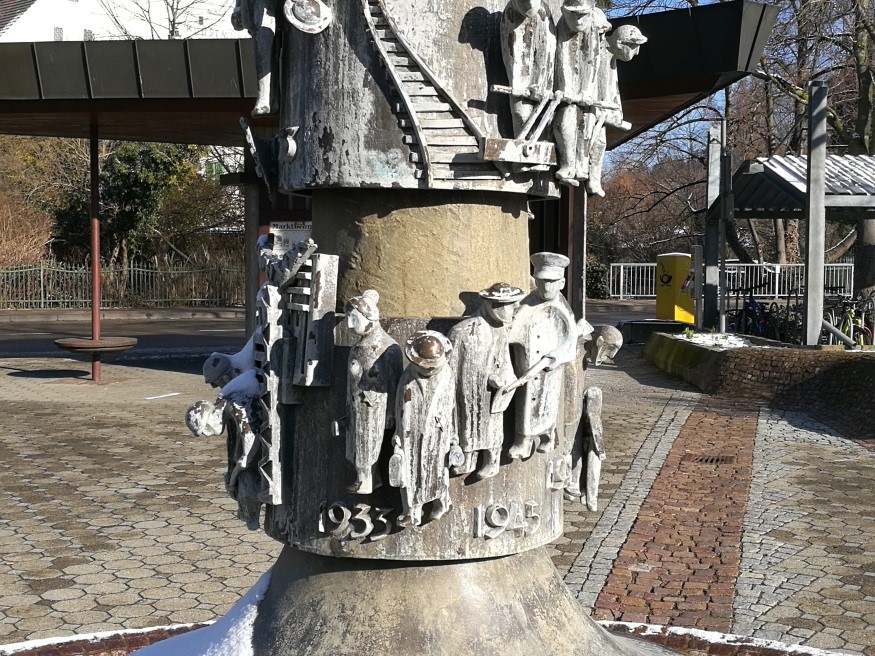
At the invitation of the community, Hugo Lang’s family visited Suessen in 1989. In 1991 the town council decided to commission a memorial monument at the Stiegelwiesen cemetery. This memorial stone bears the names of the murdered under a seven-armed candelabra [Menorah – note by translator]. It was unveiled in the same year in the presence of Hugo and Inge Lang.
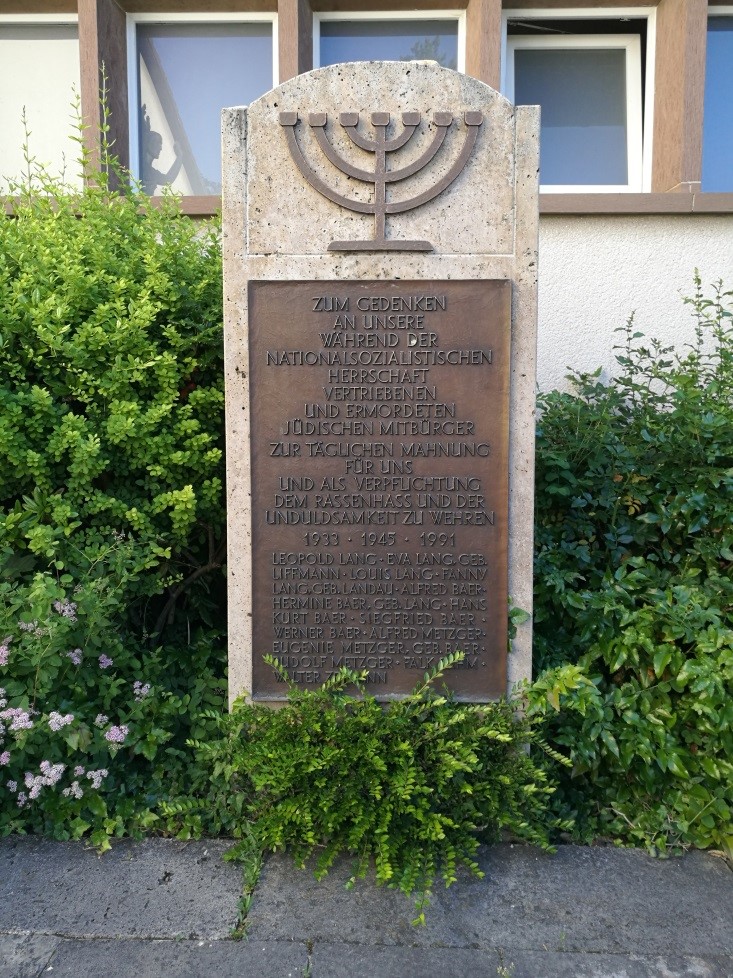
In February 2008, Gunther Demnig laid the Stumbling Stones for Fanny and Louis Lang in front of the house at former Hauptstr. 45.
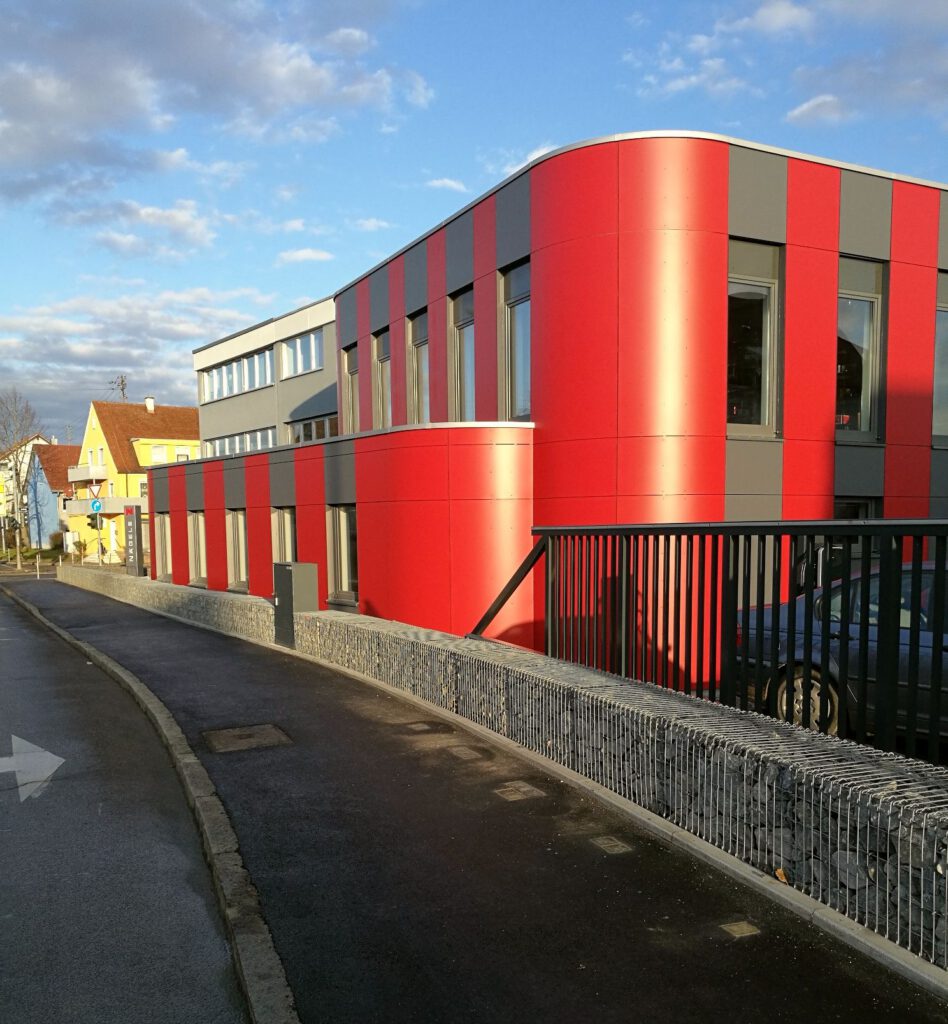
(07/14/2021 ce/ir)


my great aunt is Fanny landau,…. my great grandpa is Friedrich Isidor landau and my grandma was Ingeborg {inga} landau.,… thank you for keeping the memory alive and accessable… if there’s anything else you know about my family….let me know please